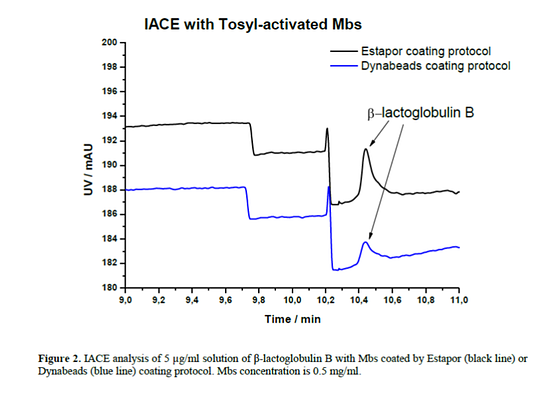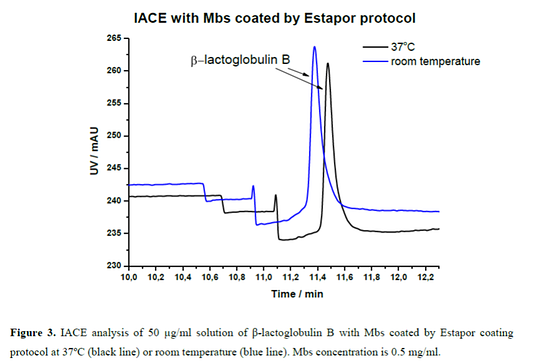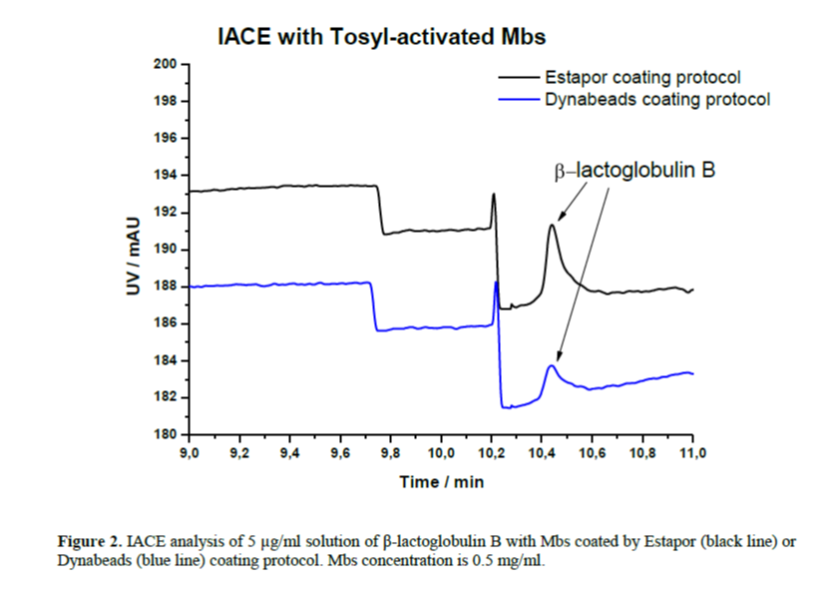Estapor R01-24 vs Dynabeads®MyOne™Tosylactivated
The researchers Natalia Gasilova and Hubert H. Girault, from the Ecole Polytechnique Fédérale de Lausanne, have released a report where they compare two magnetic bead coating protocols for immunoaffinity capillary eletrophoresis.
For the comparative study they used an immunoaffinity capillary electrophoresis (IACE) analytical system with UV-detection developed previously for bovine β-lactoglobulin B detection).
They tested coating materials and protocols for two different tosyl-activated magnetic beads: 1.29 μm diameter Estapor R01-24 (Merck Millipore) and 1.0 μm diameter Dynabeads®MyOne™Tosylactivated (Life Tech).
Estapor shows better results
By comparing the β-lactoglobulin B pick area of the electropherograms they concluded that magnetic beads coated with Estapor protocol showed better analytical performance.


In the report, they also reduced incubation time by increasing the temperature to 37ºC. Instead of an overnight process (about 12 hours), they reduced this step to just 6 hours, letting all the other unaltered. Estapor coating protocols performed at 37ºC ensure similar coating efficiency as at room temperature. Unfortunately no data is given regarding Dynabeads protocol for this experiment at 37ºC.
We would like to know your opinion on the subject. You can download the full report and send your comments to the blog (registration will be requested).



